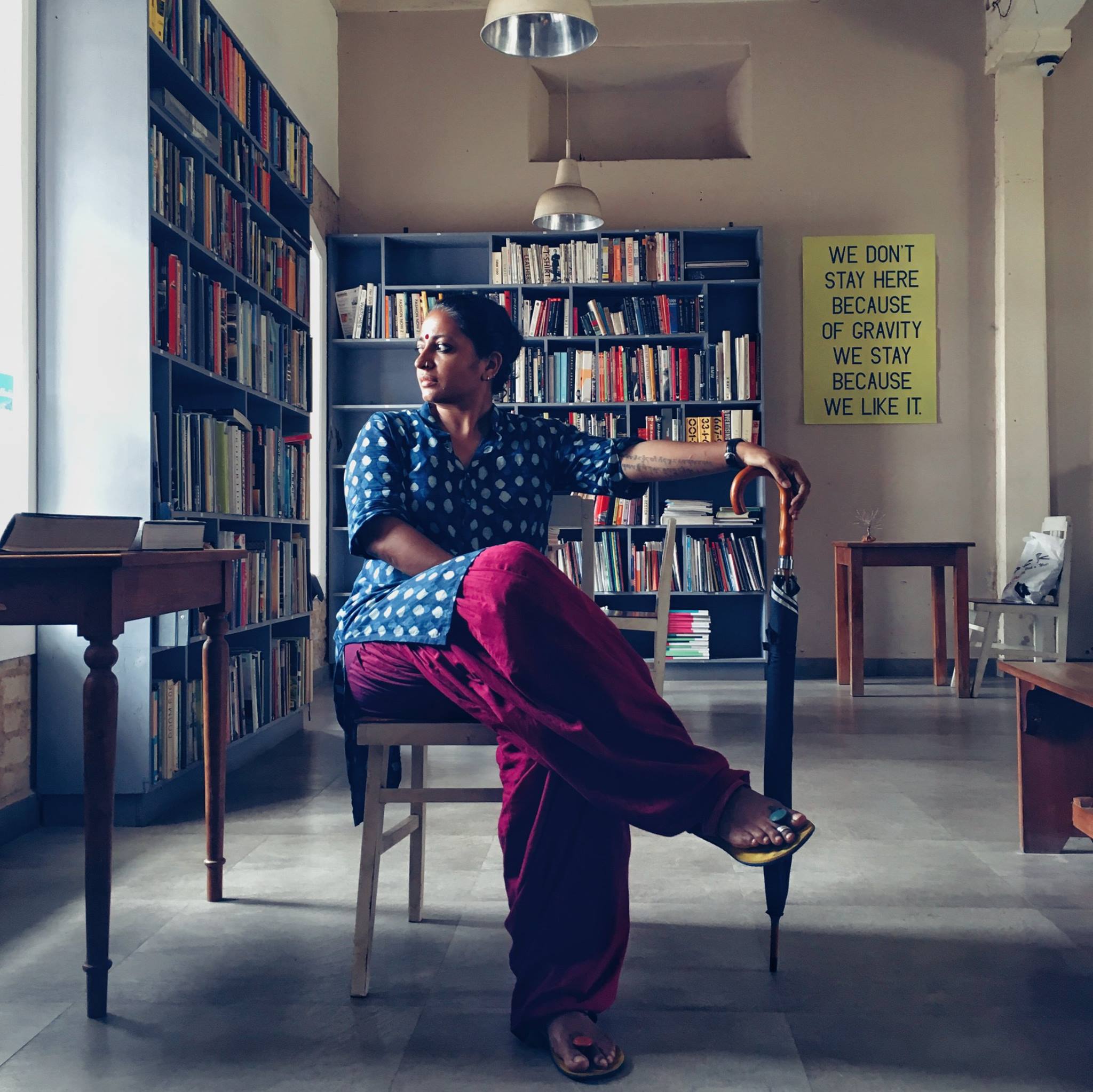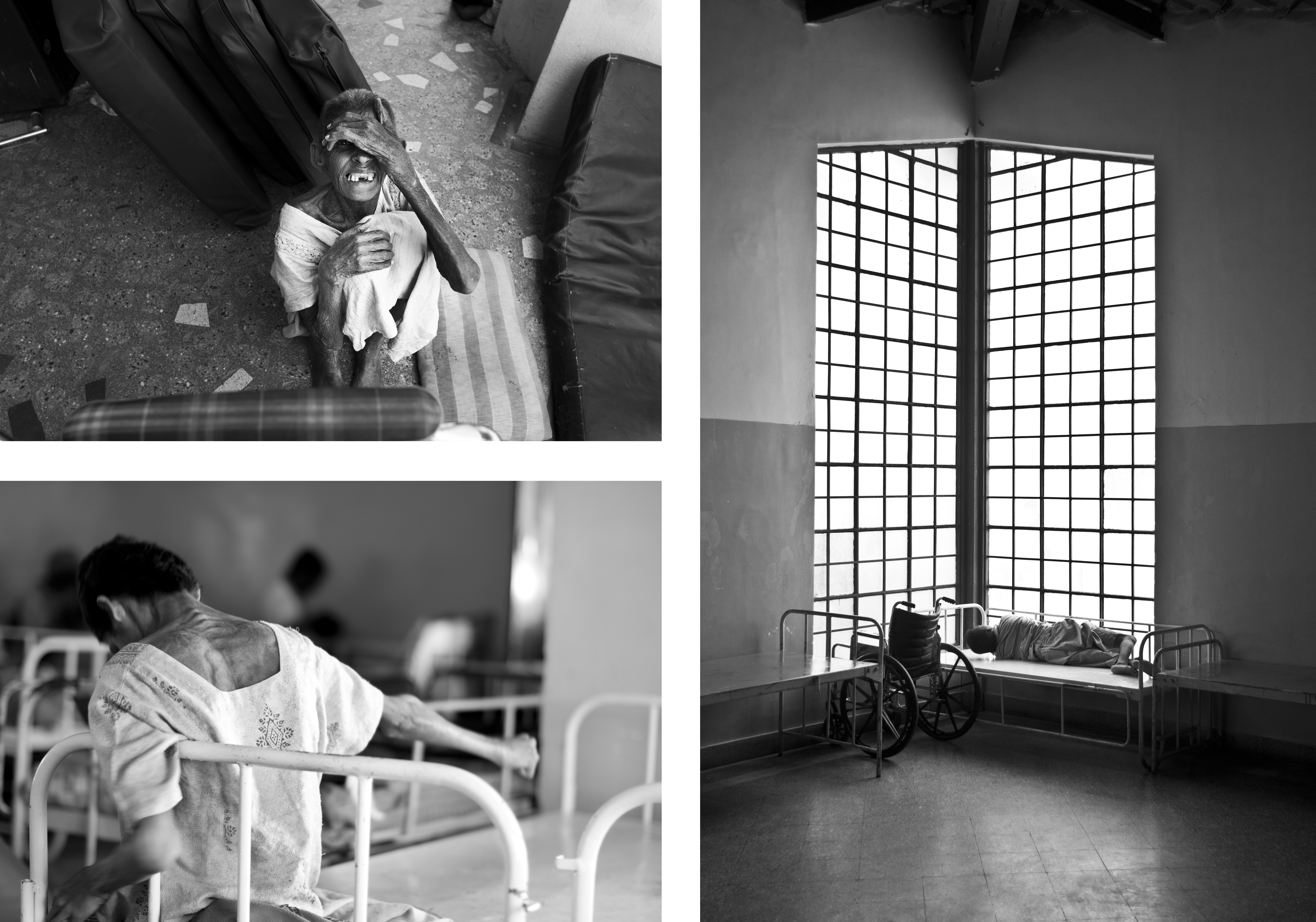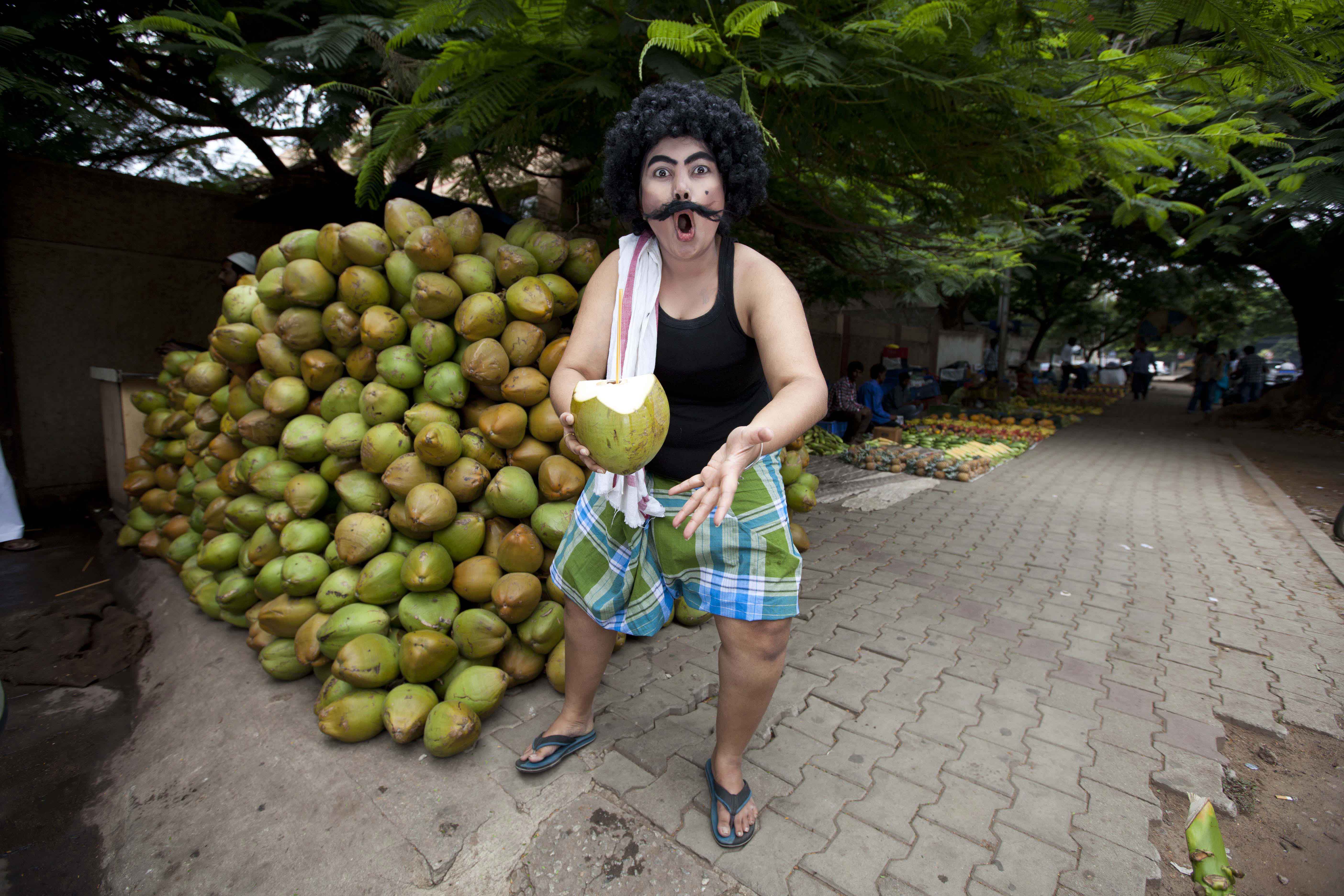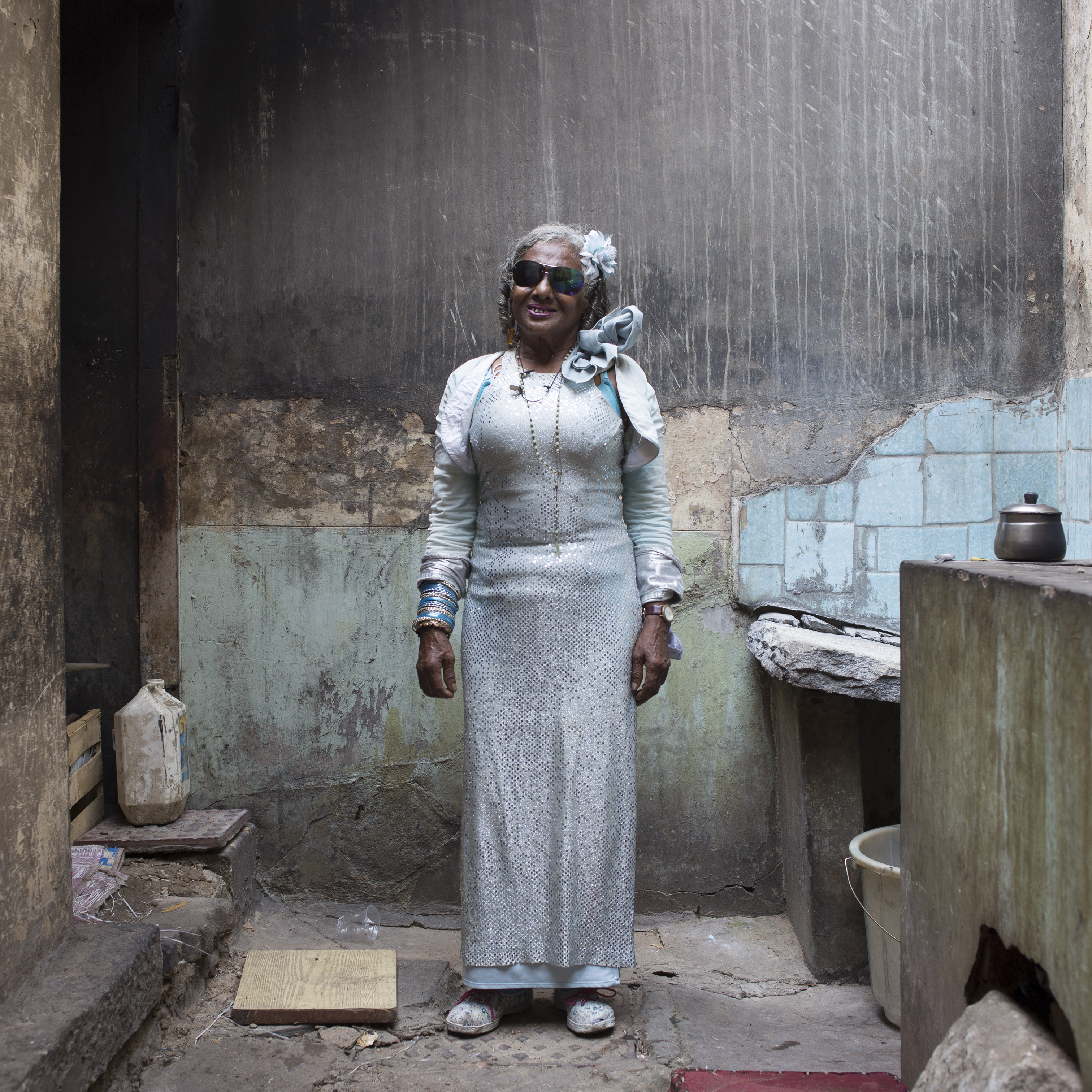Bangalore-based visual artist Indu Antony may have entered the realm of photography 11 years ago, but she recalls having a special connection with the camera for much longer. The award-winning photographer was looking at a very different future as a medical professional before her romance with art led her down a new road, one that saw her create several significant politically-charged works. Through these projects, Indu hopes to start and engage in some much-needed dialogue about the facets of class dynamics, feminism, body positivity, and trans rights, among others. Her works have travelled to exhibitions around the world including Buenos Aires, London, Houston, and Munich.
Over a Skype call, Indu takes us through a few of her significant projects, the events and institutions that informed them, and much more. Read on:
You grew up in a conventional Indian family in Kerala, India. Tell us a little about that. How were you driven towards art and culture in your formative years?
I was born in Dubai. My father ran away from home about 50 years ago. He had failed his tenth standard for the third time and was too scared of the consequences. When he moved, there was a mass migration happening from Kerala to the Gulf. The Dubai airport was being built at the time and they were looking to give all the illegal immigrants legal status in order to get as many workers as possible. So my father settled there, and a few years down the road, he married my mother on one of his holidays back home.
I lived in Dubai for 16 years, till I was in the tenth standard. It was then that my parents decided to send me back to India. They wanted my sister and I to learn Malayalam and learn more about the Indian culture, and they also had this life-long dream to have a doctor at home. Since I was always a good student, they felt that I had the potential to fulfill this dream, and therefore, there was always a lot of pressure on me. I started studying medicine in Bangalore, but left it halfway to join Chitrakala Parishath to study art.
However, I faced some issues there, so I came back. Then I figured I’d finish at least one degree though, so I completed my medical studies but I also realized that I was more inclined towards arts. Throughout my school days, I’d win awards in art competitions and excel in all my art exams, but none of it was taken seriously as art was supposed to be a hobby, not a career. That pretty much sums up my childhood.
How did you finally take the leap from training to be a physician to entering the world of visual arts? How did your parents handle the news?
My parents still haven’t come around, so that’s a different question altogether (laughs). Apart from that, I’ve had a camera from a very young age and I’ve always wanted to take photographs. I took this trip to the North-East back in 2008, and went around documenting the lives of the different people I came across. So that’s how photography began.
Photography started to seem like a very interesting medium for me to start with. I used to paint and sketch at home but I didn’t think they were good enough, but photography came to me quite easily. There was no real hesitation or thought process behind it. I knew almost instinctively that medicine wasn’t my thing and the shift thereafter happened very quickly.

Bitch Please!
Throughout my school days, I’d win awards in art competitions and excel in all my art exams, but none of it was taken seriously as art was supposed to be a hobby, not a career.
You have also mentioned how overcoming certain social obligations during your initial years greatly informed your practice. Could you talk about some of your experiences in dealing with these obstacles?
It was a very typical “Indian family” situation. There were many restrictions while I was growing up, and my mother would often say things like ‘don’t be friends with boys,’ or even ‘don’t make friends at all, you have your parents and that’s enough.’ My folks were quite paranoid that way.
Living in Dubai was like a bubble. It’s a very different world, far away from the real ground rules. I was forced to wear a dupatta. Apart from the constant reminder to dress well, I also had to wear contact lenses because I couldn’t let people know that I had glasses. My parents found the need to show me off, almost as if they were readying me for the marriage market. And I wasn’t cut out for that.
Documenting something like ‘Broken Strings‘ and its epilogue ‘Its a Beautiful World ‘Outside’‘ for about three years, what space did you find yourself in mentally, going in and coming out of this project?
Before starting ‘Broken Strings’, I remember feeling that I didn’t fit in. I didn’t feel secure in any space and that’s when I decided to do some volunteer work. I heard about this destitute home that wasn’t far from where I was staying, so I decided to photograph and document what was going on around me. That’s how ‘Broken Strings’ started. Some days I wouldn’t even photograph the people living in the home, I’d just spend time with them to get to know them more intimately.
At the time, the institute had problems of its own. I didn’t like some of the ways in which they handled their patients. I started photographing that, but eventually it became an issue for them. Even though the project took place over a long period, I wasn’t visiting the home every single day. I would go continuously for a few months and then take a break because just being there would get very exhausting for me.
After spending some time there, I found out that some of the patients I interacted with had a specific dream which was to do something as soon as they got out of the home. That’s where the video ‘Its a Beautiful World ‘Outside’’ began. Initially, I’d take photographs associated with their dreams and put it next to their own image. But the treatment didn’t work as well as I’d thought, because those photos were my realities. If they would say ‘I feel like going to a shoe shop,’ I’d photograph a shoe shop. It was too literal, so I decided to go with the recorded audio instead because the fact of the matter is that each of us form our own visual dreams of the things we say. That’s how I stuck to just using the image and the sound.
Its a Beautiul World ‘Outside’ from Indu Antony on Vimeo.
We want to talk about ‘ManiFest’. You have been considered to be the first photographer to have a large-scale body of work on the drag kings of India. How did this series come to be?
Before ‘ManiFest’, I worked on a project called ‘Bitch Please!’ which was about queer men. Each of them came up with a particular Drag name and had an idea of how they would like to present themselves. I decided to do the shoot in my studio at home where we all spent a lot of time trying to understand the different aspects of each character, from what makeup to use to what features to accentuate to what lighting to have.
I met some girls who also wanted to do something similar for drag kings. We were all trying to understand how to bring more awareness about drag kings as part of a bigger community. We sat down together to discuss this and they came up with the idea of a calendar because it was close to the end of the year. Since photographs were the most convenient medium for a calendar shoot, we decided to turn it into a series.
You’ve been through the gamut of processes when it comes to the final execution of your work, from performance art to installations to video and photography. Is the material of each work separate from its final form of expression or do you pair the two while conceiving the idea?
The content is the most important thing for me. The medium is a tool. It comes after the idea.
India is slowly, yet encouragingly, starting to accept its own diversity where it matters — ranging across issues concerning feminism, LGBTQ acceptance and body positivity. Since your work is an important part of this discourse, what will be your approach towards covering these issues as we move forward in this post-MeToo, post-Section 377 India?
To be very honest, nothing has changed in the last year. Even though the law has been passed, gaining acceptance from society is still hard. People still find it very challenging to come out. The fact that it’s not illegal is of course a huge step, but most people in India still find it difficult to open up and accept this change. Housing is being denied for queer folks, jobs are still hard to find. It’s a slow process but at least it’s begun.
As for my creative process, I don’t think it has changed in the last one year, but it has changed over the course of 11 years. My photography used to focus on just creating images, but now I’ve moved on to other things. It all depends on what the content is and what medium can best bring that out.
How do you gauge the impact of your work on your varied audiences?
For me, the process of creating my work and putting it out there is very important. I don’t actively take part in trying to understand how people feel about my art. Nonetheless, there have been a lot of responses. For example, the ‘Vincent Uncle’ project – some people didn’t connect with it, but the ones who did would tell me what it meant to them. There was a lot of confessional sharing, which was great for me.
The ‘ManiFest’ project also had a lot of conversation around it because at first glance, it’s hard to figure out what’s going on with the characters. You’re trying to identify them as male or female, and asking yourself why they’re dressed the way they are. Eventually, it creates a space for dialogue. I think most of my projects do start conversations about certain topics, whether it’s about our point-of-view or about everything that happens around us.

Vincent Uncle


Your project ‘Cecilia’ed’ recently became the recipient of the FICA Public Art Grant 2018. The concept of “disrupting normative notions of gender” is taken one step further by actually hosting it in public spaces across Bangalore. What do you envision for Cecilia’ed, especially considering its increased accessibility?
I met Cecilia last year and have been spending a lot of time with her ever since. When I first saw her, she was wearing a flamboyant dress and pushing her cycle along a street, and I found that particularly interesting. In that moment, I felt that could be me in a few years, being alone on a cycle in this world. I saw how she was conducting herself in public spaces, all nonchalant and that too at the age of 74. I had to go talk to her. People would be cat-calling her and she would go about such spaces in a very interesting manner. That’s when it struck me — Cecilia could be the ambassador for women who find it hard to access these spaces.
I live in a very lower middle class area in Bangalore. It’s a recent development in the outskirts of the city and it has a lot of bars, the kind where you just have a few quick drinks and then get out just as fast. It’s a very male-populated and male-dominated space. It was so difficult to walk past such places in the evenings that several women just moved houses to avoid doing it altogether. Subconsciously, even I end up taking a different path because I don’t want to put myself in those spaces. The crime rate in Bangalore, especially in this area, has increased tremendously. I’ve been talking to the sweepers and the women’s association in this area and every woman has different stories of what happened to them.
I was thinking about how we could make these spaces safer, but from the perspective of an art project, not an NGO. We’re trying to create awareness by starting healthy conversations around this issue, which is how ‘Cecilia’ed’ came to be. We thought we would start reopening certain places and have Cecilia come there to do a ribbon-cutting ceremony of sorts but in a very comical, fun manner and spread the word in the process.
The fact that it’s not illegal is of course a huge step, but most people in India still find it difficult to open up and accept this change. Housing is being denied for queer folks, jobs are still hard to find. It’s a slow process but at least it’s begun.
Tackling stereotypes and taboos in the social, political and cultural spheres in India must not have been without its challenges. Anything in particular that you can recall?
At the bars, for instance, people thought I was trying to criticize drinking. Honestly, I love alcohol and have no issues consuming it. The idea was never about alcohol consumption, but it was quite challenging to get this across because people just saw it as a drive against alcohol. I’m not getting into the issues that happen inside these bars, I’m trying to pull focus on what happens on the streets outside. I’m not talking about having access to bars or going to places where you can get intoxicated, I’m talking about making the road outside these bars easy for me to walk past. The gender majority from inside such a space overflows onto the streets, and it becomes very hard for womenfolk to cross these areas. So that was an obstacle.
Even spaces like bike workshops and men’s salons are heavily gendered and are usually found in each other’s vicinity. I’ve been studying the feminist geography around these kind of places and how people have segregated these spaces for themselves. A hardware shop, a mechanic shop and a salon stand close to each other, and the whole space becomes very gendered. There are several such spaces that need re-examining.
Another example is ‘Broken Strings.’ It’s something I would not do again today. At that point, I was very documentary-centric. I wanted to talk about the truth but I never really positioned myself in the institute. Even though I spent a lot of time with the patients, I was still not a member of the home. I find it a little problematic now to go back and make a project like that. I can’t even do street photography unless I am a part of the community I’m photographing or at least a part of what’s happening. It’s these class differences that are difficult to deal with when you’re trying to create something that involves issues concerning poverty.
I met Cecilia last year and have been spending a lot of time with her ever since. When I first saw her, she was wearing a flamboyant dress and pushing her cycle along a street, and I found that particularly interesting. In that moment, I felt that could be me in a few years, being alone on a cycle in this world.
Anything from the realm of literature, film, music, fashion etc. that fuel your work?
I get inspired by so many things. I go around the local markets a lot and to katteys which are basically these spaces where people get together to have all kinds of conversations. I like to just sit there and hear people’s stories. As an artist, it’s very easy to get sucked into your bubble, so it’s nice to be grounded. People and their stories are my biggest inspiration. Every time I see something new, I try to think about what it is or about the people behind it. Of course, going to new films and exhibitions, and seeing other artists’ works and how they connect to their surroundings are also very inspiring.
Are there any current political issues that have peaked your interest and could end up being a possible project in the future?
When I was traveling to Berlin for an artist’s residency, they put me in the airport cell because of some misunderstanding around the word “residency”. Since then, I’ve been thinking a lot about countries and their borders and how these things work. Because of Berlin, I have so much anxiety trying to cross a border now. Even if I see a toll gate while crossing Tamil Nadu, I start to panic. I’m trying to understand how borders and boundaries are meant to manipulate people and how we need to talk about erasing them, especially in a time where people are trying to create more of the same. That’s something I’ve been putting a lot of thought into and hope to work on soon.

{F.I.C}
Tags
activism, Art, Artist, contemporary art, feminism, indu antony, Interview, LGBTQ, Photography, Visual ArtIndu’s photograph is provided by her. ©
The cover image is from Indu's 'ManiFest' series of photographs. ©




